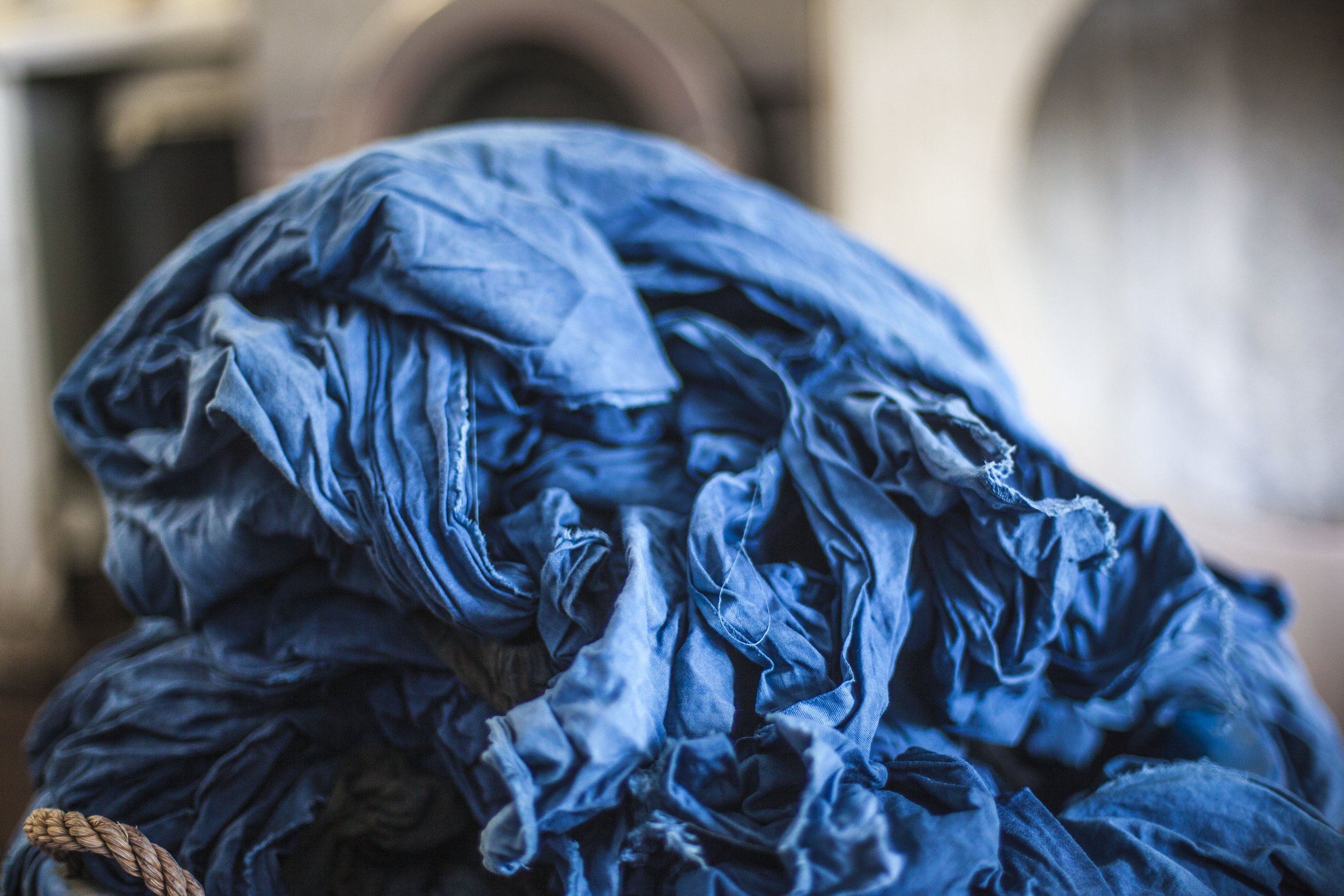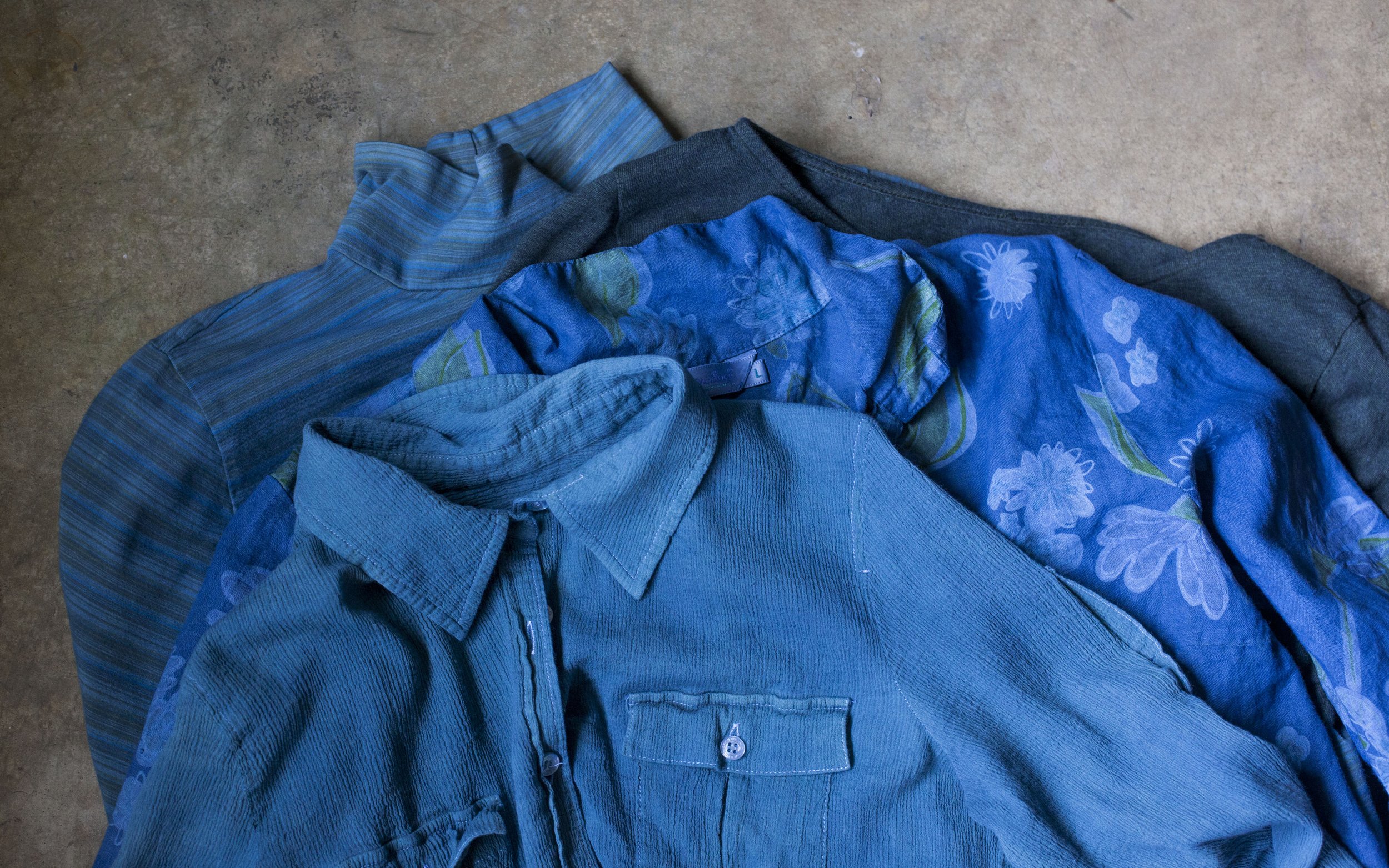The Community Indigo Vat - Keeping Garments out of Landfills
I wanted to take the chance to tell you more about our new service ‘The Community Indigo Vat’, and why we are offering this consumer facing service.
For the past 7 years, we have been a B to B business (meaning our service is designed for other businesses). This means that all of our services have had some kind of MOQ (also known as minimum order quantity). MOQs allow us to offer our commercial clients economy of scale, or say ‘If you can dye this many shirts, we can offer you a lower price than we could if we were dyeing fewer shirts’.
For years, we have received inquires stating some variation of the same thing; I have 1 garment in my closet that I love, but is stained, or the wrong color. Can you dye it for me?
Dyeing a single garment is costly, as it requires us to manage much of the same data, quality assurance, correspondence and expectations as a commercial order of hundreds of units. From a business perspective, it just never made sense, and we would often turn these people away with few options to refer them to.
From the planet’s perspective? Empowering individuals to have options for extending the life of their existing wardrobe is probably the most sustainable service we are able to offer. Buying a new garment will always have a larger environmental footprint than extending the life of an existing one.
The fashion industry’s impact on the environment is a net that is cast wide, from the carbon emissions generated by shipping between vendors within a supply chain, to raw materials being grown and harvested (and the carbon emissions from that production), the plastic used in transport, the pollution created by dyeing and finishing fabric, the list goes on. Additionally, (according to Bloomberg) the US alone throws away around 11.3 million tons of textiles every year. Stay tuned for an upcoming blog post on textile waste!
When you mend an existing garment rather than buying new, you are eliminating most of this waste. Sending garments to our community indigo vat is one way to do this! Other ways to extend the life of your clothing and textiles:
Proper garment care and storage
Mending (Check out books by Katrina Rodabaugh, which are great resources on this topic!)
Tailoring
Repurposing
Earlier this year, I shared a reel on Instagram detailing one of my garment’s journey through our indigo vat. This was a flannel shirt that belonged to my great grandmother. While it wasn’t a color that suited me, this shirt carries a lot of memories with it, and I was not willing to part with it simply because I didn’t like the color.
So what can we dye in our indigo vat?
We can dye any natural fiber (or mostly natural) garment or textile. Natural fibers include cotton, silk, hemp, linen, wool, tencel, viscose, bamboo, etc. So what if your care label says something like 90% cotton/10% polyester? This will still accept the dye! The best blends for our dye bath have 75% or more natural fiber.
What if my garment already has a base color (like yellow) or has an existing print (like a stripe or screen print)? This is fine, and often results in really beautiful outcomes. An existing color may impact the outcome. For example, a yellow shirt might result in a blue that is slightly warmer/greener compared to a white garment dyed in indigo (which would likely dye a clear blue). Darker garments might not turn a true blue, but can leave a cool cast over an existing color. We have over dyed a black shirt with a bleach stain to cover the stain.
We hope this service helps people have more power over the life span of the garments in their wardrobes. Have an item in mind but not sure if it is a good fit? Reach out to our team to discuss!



